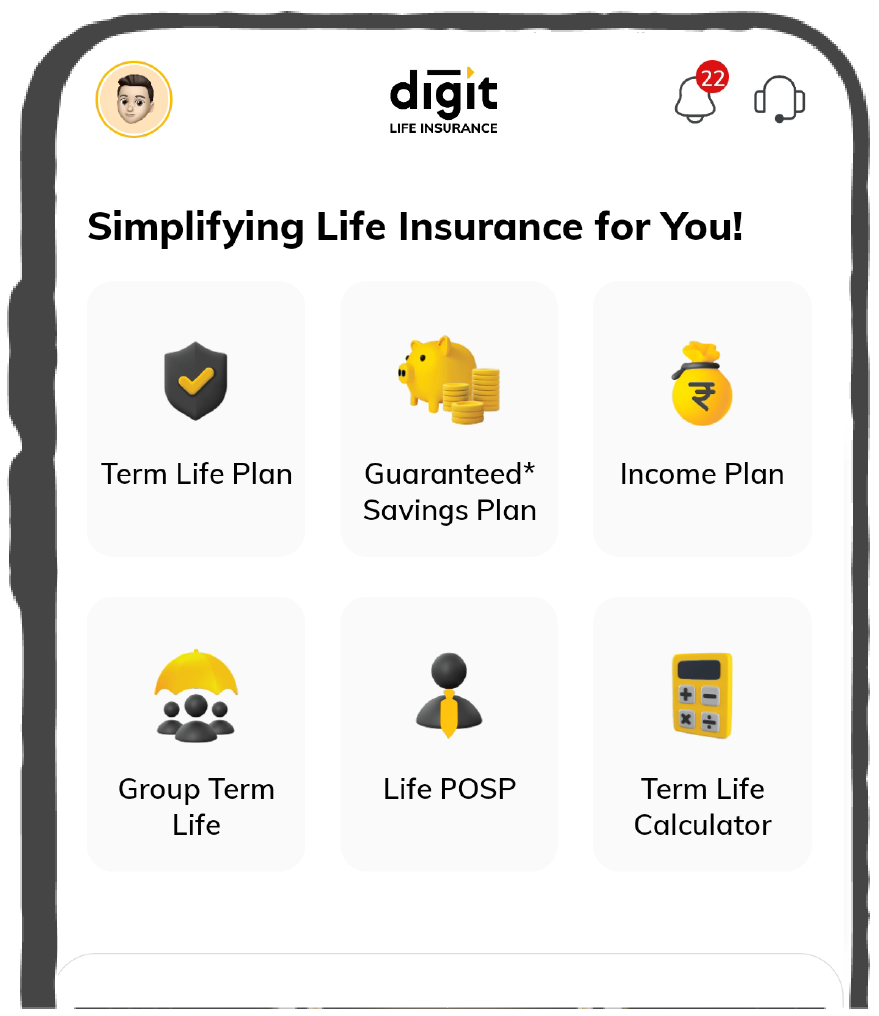What is the Meaning of Level Term Insurance & How it Works?

Term insurance is often seen as the simplest form of life insurance because it provides straightforward death benefits. To cater to different needs, it can be divided into various types, one of which is Level Term Insurance.
This type of policy works like regular term insurance but is called a "level benefit policy" because the death benefit remains the same throughout the policy term. Let’s learn more about how this coverage works and how it can help your loved ones.

Table of Contents

What is a Level Term Insurance Policy?
Level Term Insurance is a type of term insurance where you pay the same premium throughout the policy term, and the coverage amount stays the same. It's a cost-effective way to ensure your family is financially protected if something happens to you.
With this policy, if you pass away during the term, your beneficiaries receive a fixed death benefit. This means you can secure your family's future without worrying about increasing premium costs. Typically, these policies last from 10 to 30 years, depending on your needs.
In short, Level Term Insurance helps you protect your loved ones without straining your budget.
Why Should You Opt for a Level Term Life Insurance Policy?
You might not always be there to take care of your family, but a Level Term Life Insurance can help. It pays out a death benefit to your family or nominee to cover any financial needs they might have. This type of insurance usually lasts for 10 to 30 years. It gives you peace of mind knowing that in your absence, it will cover expenses like household bills, education costs, and loans.
Additionally, you can add extra coverage for things like critical illness, providing even more protection for your loved ones. This way, you can ensure that their day-to-day expenses and financial obligations are taken care of, even if you are not around.
Types of Level Term Insurance Policies
5-Year Level Term Life Insurance
This policy lasts for 5 years and is ideal for those needing short-term coverage. It's great for someone nearing retirement or just starting a job after high school.10-Year Level Term Life Insurance
This policy provides coverage for 10 years. It's often chosen by parents who want to secure funds for their children's future, like higher education.15-Year Level Term Life Insurance
This policy covers you for 15 years and might have higher premiums. It's suitable for those with long-term financial goals.How Does a Level Term Insurance Work?
1. Set the Policy Details
Choose the sum assured (the amount your family will receive), the term (how long the policy lasts), and how the death benefit will be paid (lump sum or periodic payments).2. Pay Premiums
You can pay the premiums monthly, quarterly, semi-annually, or annually.3. Payout
If you die during the policy term, your beneficiaries receive the full death benefit. If you outlive the policy, it expires, and no benefits are paid.4. Return of Premium Option
If you want the insurer to pay back the premiums if you outlive the policy, select the Return of Premium option when you buy the policy.Understanding Level Term Insurance Scenario with Illustration
Riya buys a Level Term Insurance Policy with a sum assured of ₹20 Lakhs. She chooses a 30-year term and pays the monthly premiums. If Riya passes away unexpectedly, her husband, as the primary beneficiary, must inform the insurance company and file a claim.
After verifying the claim, the insurance company would pay ₹20 Lakhs to Riya's husband. This way, Riya ensures her family is financially protected even if she's not around. However, if Riya outlives the 30-year term of the policy, a level term plan typically does not provide maturity benefits, meaning Riya would not receive any payout.
Disclaimer: The above illustration is a hypothetical example created for educational purposes only and does not represent a real-life scenario. Please read your policy documents to understand the terms and conditions clearly.
Benefits of Level Term Insurance Policy
The benefits of level term insurance policies are as follows:
Assurance
The plan is very simple to understand, as you can be sure about the amount that your beneficiary will be receiving after your death. Hence, it becomes easier to plan your finances accordingly unless you outlive the policy duration.
Stability
The policyholder and insurer can discuss among themselves to select an appropriate amount. Hence, it is considered a stable plan as you do not have to worry about coverage and at the same time the premiums stay constant throughout.
Affordable
The premiums of this policy are pretty affordable. Hence, paying them will not act as an additional burden on your finances. Also, your monthly budget will not get disrupted on purchasing this plan.
Annual Renewal
Towards the later stages of this policy, you will have to pay the premium only once a year. Hence it will be easier for you to save money for the same and you do not have to face any financial crunch.
Add-Ons Available
You can choose several additional riders for your plan according to your lifestyle needs. This will provide you customised coverage on your policy and ensure that you stay protected from predictable adverse situations.
Lump-Sum Payout
Your nominee will receive all the money at once after your death. Hence, they can use this money according to their need and do not have to stay dependent on the insurance company for the same every month.
Tax Benefit
Your nominee will not have to pay any tax on the claim amount according to Section 10D of the Income Tax Act. Thus this money acts as a safety net which they can use to the fullest to meet their financial requirements in your absence.
No Hidden Charges
There are no hidden charges involved in this policy. Hence, you can easily plan your budget and save accordingly with the assurance that there will be no extra charges or sudden increase in premiums. Apart from this, there are several cons as well that you must know before purchasing this plan for providing financial assistance to your family after your demise.
Level Term vs Decreasing Term vs Whole Life Insurance
Here is a comparison between level term life insurance, decreasing term insurance, and whole life insurance plans to help you make an informed decision:
Who Might Benefit from Purchasing Level Term Insurance?
Parents with Young Children
If you have young kids or are planning to start a family, Level Term Insurance can help cover future expenses like child care, college tuition, and living costs. It can also replace lost income during your children's formative years.Primary Breadwinners
If you are the main financial provider for your family, this insurance ensures that your loved ones are taken care of financially if something happens to you.People with Debts
If you have significant debts, such as a mortgage or personal loans, Level Term Insurance can help pay off these debts, so your family isn't burdened with them.Young Professionals
Those just starting their careers might find Level Term Insurance an affordable way to secure financial protection for their future.Individuals Considering Permanent Life Insurance
Before committing to a more expensive and complex Permanent Life Insurance Policy, you might want to explore the more affordable and flexible term options that Level Term Insurance offers.What are the Things to Consider Before Buying a Level Term Insurance Policy?
Lifestyle of Family Members
Understanding the current lifestyle and future requirements of your family is essential to select the right premium. Otherwise, the money can fall short and won’t offer sufficient financial coverage after your demise.Selecting Appropriate Policy Tenure
You must carefully evaluate the tenure of your policy based on your current age and medical conditions. Although there is no certainty to life, you can always select longer tenure to stay insured for a longer duration without purchasing another plan.Current Financial Status
While planning for future financial coverage, you must also consider your present monetary capacity. Otherwise, if you choose a higher coverage amount, your current premiums will also be considerably high, which might act as an increased financial burden.Current Medical Conditions
If you are going through any critical health condition, you must make sure to declare the same to your insurer. This will ensure that you get sufficient coverage and do not have to worry about financial assistance for your family.Riders
You must select appropriate riders that are beneficial for you. This will ensure that your family stays financially protected if you embrace death under any unforeseen circumstances. A level term insurance policy can bestow numerous benefits to your family in case of your unfortunate demise. However, you must consider its disadvantages and certain other factors to decide if it is the right choice for your financial needs.Eligibility Criteria for Level Term Insurance
Eligibility criteria for level term insurance policies are designed to determine who can acquire and benefit from the coverage. These criteria vary among insurers but generally include the following key points:
Documents Required for Level Term Insurance
To apply for level term insurance, typically, the following documents are required:
Steps to Buy a Level Term Policy
Step 1
Calculate how much coverage you need to cover major expenses like mortgages, loans, and future costs for your children.
Step 2
Use an online term insurance calculator or talk to insurance agents to get quotes and compare premiums and policy details.
Step 3
Fill out the application with detailed information about your health, lifestyle, and any risky habits.
Step 4
Most insurers require a medical exam to determine your risk profile and final premium.
Step 5
Once approved, you will receive details about the premium and policy details. Pay your first premium to activate the policy.
Tips for Choosing the Right Level Term Insurance Plan
Find the Right Policy
Look for a Level Term Life Insurance Policy that fits your needs and budget.Consider Your Finances
Make sure you can afford the premium payments. If you miss payments, your policy could lapse.Choose the Right Term
Pick a term that covers your most financially demanding years. For example, a 20-year policy might be perfect for young parents who expect their kids to finish college and become independent by the end of the term.Check the Insurer's Reputation
Research the insurance company's customer service, policy details, and reliability.Disadvantages of Level Term Insurance Policy
The disadvantages of level term insurance policies are as follows:
Fixed Coverage Based on Current Health
Your health determines your coverage at the time of purchase. You can't increase the coverage if you develop serious health issues later.
Premiums
While consistent premiums are predictable, they might not match your family's changing financial needs over time.
No Payout if You Outlive the Policy
There are no benefits if you outlive the policy term.
Need for a New Policy
If the policy expires before you do, you will need to buy a new one, which can be more expensive due to age.
What Happens When a Level Term Insurance Policy Expires?
When a Level Term Insurance policy expires, the coverage it provides comes to an end. At this point, you have a few options. You can choose to renew the policy, but be aware that the premiums will be higher due to your increased age. The advantage is that you won't need to undergo another medical exam or health questionnaire.
Alternatively, you can convert your term policy into a permanent life insurance policy. This conversion will also result in higher premiums, but it ensures that your coverage continues for the rest of your life as long as you keep up with the payments.
If you opted for a Return of Premium rider when you first purchased the policy and outlived the term, the insurance company will refund the premiums you paid over the years. However, if you do not renew or convert your policy and you outlive the term, your beneficiaries will not receive any death benefit.
Note: Adding a Return of Premium rider increases the cost of your policy, but it benefits from getting your money back if you outlive the policy term.
FAQs about Level Term Insurance
What happens if you outlive level term policy duration?
What is the usual duration of a level term policy?
Can you cancel the level term insurance policy?
Is level term insurance policy permanent?
Will the premium change in the years to come?
What happens if the insured starts smoking after getting a life insurance policy?
Is a medical examination required to get a level term insurance policy in India?
What new options do I have for adjusting my premium?
What if I want to cancel my level term insurance policy early?
What is the maximum coverage I can get for an accidental death benefit rider?
How does inflation affect level term insurance?
What happens when level term life insurance expires?
Can you extend level term life insurance?
How do I calculate the right coverage for level term insurance?
Is a ₹1 crore term plan available as level term insurance?
Can I buy term insurance if I have pre-existing conditions?
Yes, you can still buy term insurance if you have pre-existing medical conditions. Still, there are a few important things to keep in mind, such as disclosing your health conditions and undergoing a medical examination.
However, it’s also wise to have a comprehensive health insurance policy if you have PED. While term insurance protects your family financially after your death, health insurance helps you manage ongoing medical expenses during your lifetime
Other Important Articles about Term Insurance Features
Other Important Articles Related to Term Insurance










